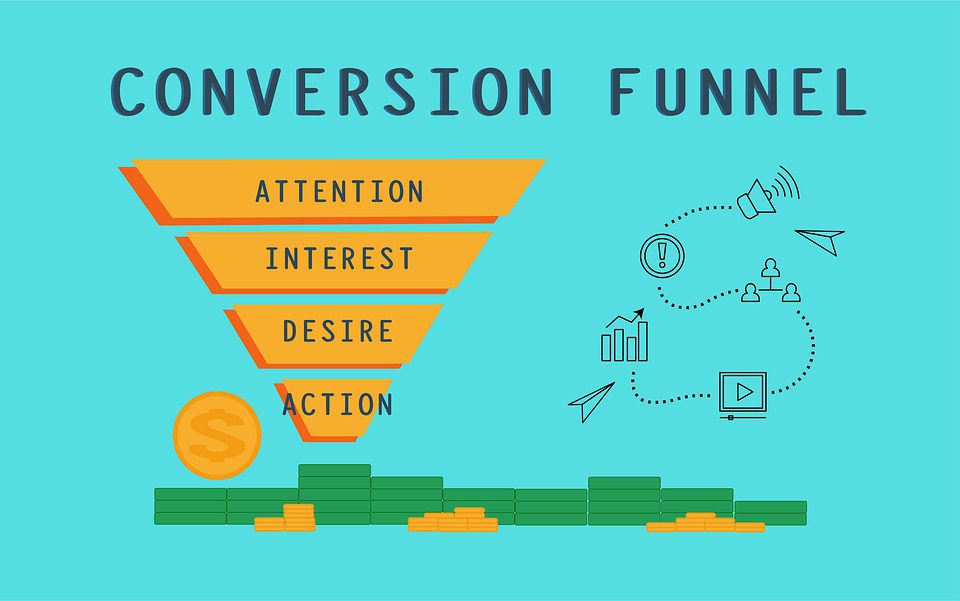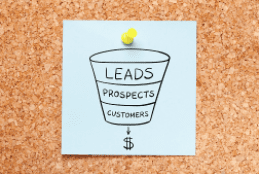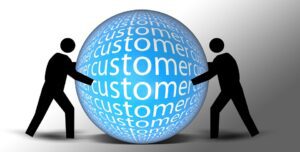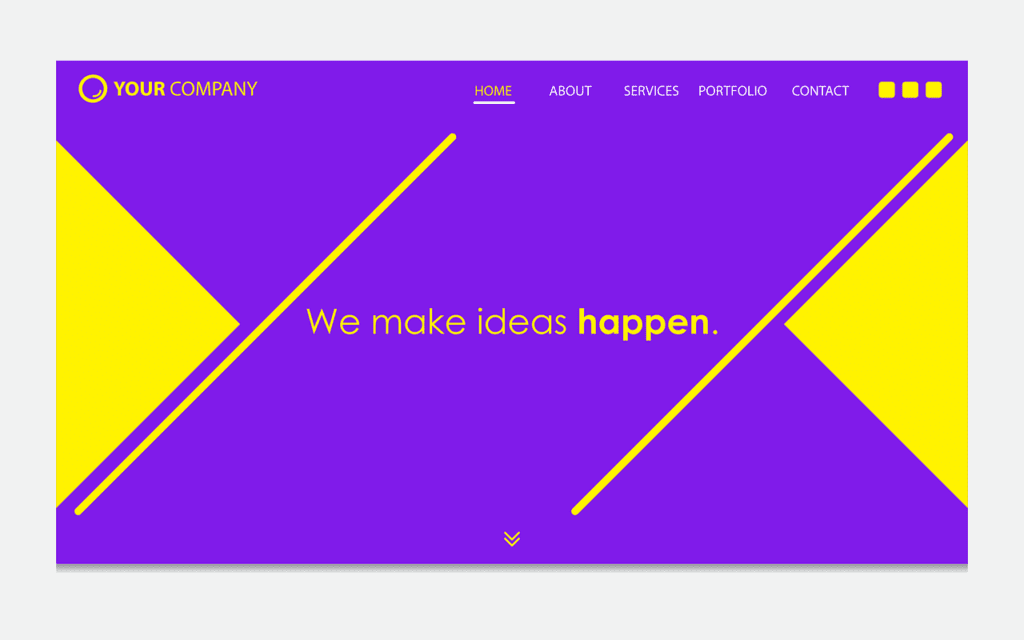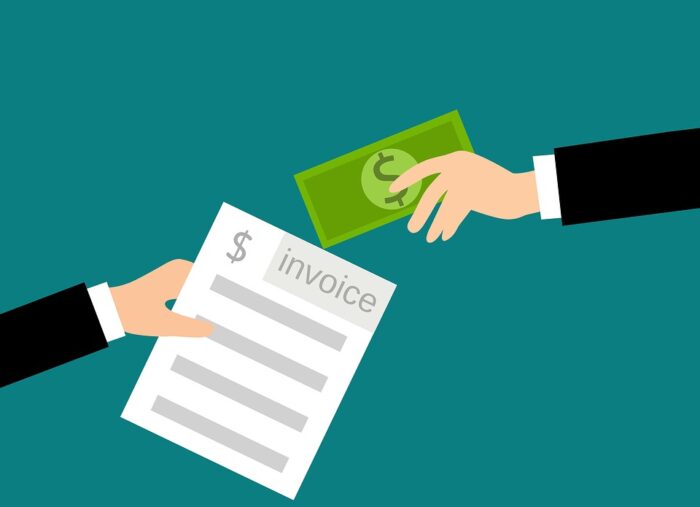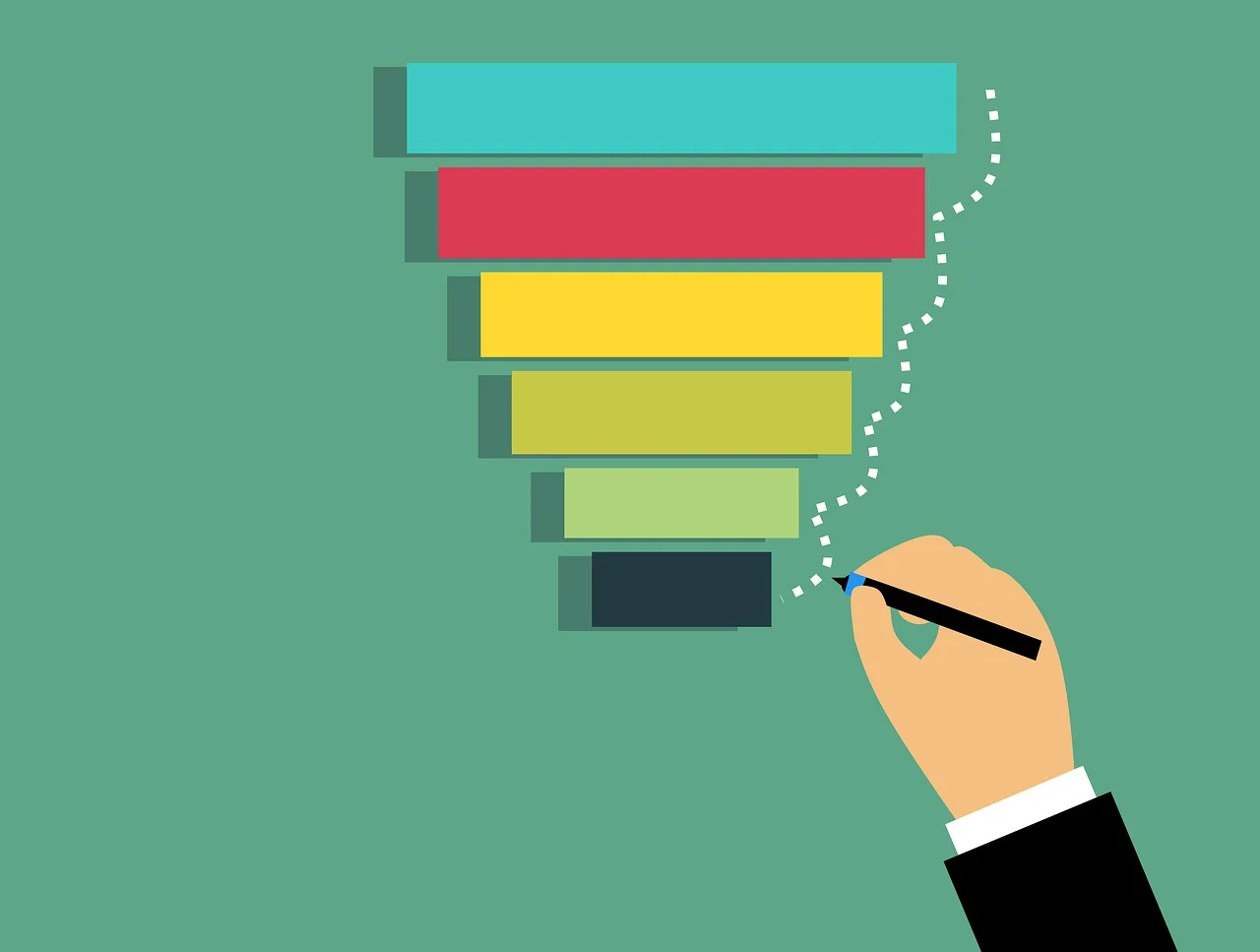
What is a Sales Funnel?
Customers go through a specific journey while making any purchase. A sales funnel is a visual representation of a sales journey. Every business uses this model as an analogy, intentionally or unintentionally, because many customers start the process. But only a fraction of those making the final purchase.
Why is this called a funnel, after all? Let’s understand this with an example. A customer enters the store at the top of the funnel with the broadest category of potential prospects.
The target audience narrowed down the funnel in the middle when he took the jeans from the rack. He is at the bottom of the funnel when he checks out. And makes the final purchase.
Wide at the top and narrow at the bottom. The process filters the potential customers who are worth your focus. And they can be converted into qualified leads.
With unsuitable falling out of the tunnel, you can analyze the best fit for what you offer. And how to keep them engaged as they progress through their buying journey.
What are the types of sales funnels?
Understanding the correct type of sales funnel to bring sales to your business is essential if you’ve gone through the basic definition of the sales funnel.
It’s time to discuss the types of sales funnels. Here you go:
- Lead generation funnel
- Webinar sign-up funnel
- Call booking funnel
- Cross-sell funnel
- Limited time offer sales funnel
- Product launch funnel
So, always use the correct type of funnel to bring sales on autopilot.
What are funnel leads?
A funnel lead is more or less similar to a sales funnel. It’s a process or series of steps that start from the beginning and lead to an opportunity.
Why is a Sales Funnel Important?
If you are a businessman or the head of a company, you must know the real pain when prospects drop out of the funnel without making a purchase.
After all the content optimization, webinars, or lead magnets, you miss out on sales. That frequently happens.
But you can reduce the happenings with better customer insights. It will help you invest in marketing channels and activities to create engaging and relevant pitching prospects.
There are four reasons why the sales funnel is vital for the success of the business:
1. Share the right message at the right time with the right audience.
2. Convert cold leads to warm leads.
3. Create more leads to generate more sales.
4. Offers the Ideal Business Growth Model.
So, the bottom line is your overall marketing strategy can be a hit or miss because of the sales funnel.
Stages of Sales Funnel
The sales funnel stages represent the customer’s mindset and require a distinct approach from the marketing perspective. Traditionally, the marketing funnel is divided into three phases: Awareness, Interest, Decision, and Action.
Let’s take the hotel industry as an example, where a person is looking to book a hotel.
1. Awareness
The stage starts when a tourist decides where to book a trip and visits a hotel website to learn more about a resort and its facilities.
Marketing professionals must generate appealing content for visitors to form a favorable impression of a hotel brand.
2. Interest
This stage comes when he considers booking at a specific resort. Retargeting tries to re-engage consumers who have previously expressed interest in a hotel by visiting its website or social media channels.
3. Decision
At this stage, marketers must analyze the booking engine to verify that it is user-friendly and straightforward to reduce the likelihood of cart abandonment.
4. Action
The sales funnel is booming because customers are booking. By acting, the prospect eventually converts into a customer. Marketers must invest heavily in monitoring to measure the effectiveness of the sales funnel and obtain a high conversion rate.
The objective of the sales funnel is not just to generate sales but to retain the customer. As often said, a happy customer is a repeat customer.
This stage requires you to keep customers happy to come back to you.
For this, help the customers with their pain points, reach out to them for feedback, express gratitude for their purchase, or engage them with different approaches.
Follow-up emails, special offers, surveys, product usage guides, or offer technical assistance if required.
Key Takeaways
- Understanding the Customer Journey: The sales funnel is a visual representation of the customer journey of those who are interested in any product, from initial awareness to the final purchase.
- Stages of the Sales Funnel: These sales funnels typically consist of several stages – Awareness, Interest, Decision, and Action (AIDA).
- Importance of Lead Nurturing: Not all customers who enter the funnel will reach the end. It’s crucial to nurture leads through the funnel with targeted content and personalized interactions.
- Analyzing and Optimizing the Funnel: Regular analysis of the sales funnel is essential to identify bottlenecks or stages where customers drop out.
Step-by-Step Guide to Build a Sales Funnel
To create a successful sales funnel, follow these four steps:
1. Know Your Customer (KYC)
Before creating a sales funnel, gathering information from your target audience is crucial. They are more likely to purchase your product or service.
Get insights about their problems, the types of solutions they seek, the social media channels they use, their interests, etc. All these points will help you to create your buyer personas.
2. Capture Target Audience Attention
You can transform potential prospects into customers through different channels—show content (infographics, blog, ads, videos) relevant to them to capture their attention.
Start by building organic traffic on your website through different sources. Like Search Engine Optimization (SEO), social media traffic, external links, Pay-Per-Click (PPC) campaigns, Landing page optimization, Influencer marketing, Guest posting, social media marketing, or word of mouth.
3. Build Strong Customer Relationships
If you fail to engage your customers, all the efforts will be in vain. Build trust and nurture positive relationships with prospects by providing new insights about your product or service.
An email marketing campaign besides blogs, videos, or influencers is considered the most effective strategy.
Encourage your subscribers to purchase your product with emails at least once a week. Provide valuable content in the email and enticing offers to make them act.
4. Keep in Touch with Your Audience
After customers purchase your products, the funnel does not stop. Thank your customers for buying your product. Involve them in your social media spheres, including testimonials, and invite them to provide feedback.
You may also offer them various sorts of items.
Continue reaching out to existing customers for follow-up and nurture them over time.
Sales Funnel Templates
Now you know the sales funnel, its benefits, and its outcomes. Various templates you will find online are created by different web designers and developers to ease the process.
Some of them are handy, while some are complex. Choose as per your business needs and customer personas.
Here are some websites where you can download free sales funnel templates:
FAQ
What is a sales funnel calculator, and how does it work?
A sales funnel calculator is a tool that helps businesses estimate the number of leads they need at each stage of the sales funnel to achieve their target sales.
It considers factors like the conversion rate at each stage, the average deal size, and the sales target. By inputting these values, businesses can get a clear picture of their sales process and identify areas for improvement.
Let’s consider an example of a sales funnel calculator:
Let’s say you have a sales target of $100,000. The average deal size is $10,000. This means you need to close ten deals to meet your sales target.
Now, let’s assume the following conversion rates at each stage of your sales funnel:
- Lead to Opportunity: 50%
- Opportunity to Proposal: 50%
- Proposal to Close: 50%
Here’s how you would calculate the number of leads you need at each stage:
- Close: To close ten deals, you don’t need any additional calculations. This is your starting point.
- Proposal: Since only 50% of proposals lead to a close, you need 20 proposals (10 / 0.50).
- Opportunity: Similarly, since only 50% of opportunities lead to a proposal, you need to have 40 opportunities (20 / 0.50).
- Lead: Finally, since only 50% of leads become opportunities, you need to have 80 leads (40 / 0.50).
So, to meet your sales target of $100,000 with an average deal of $10,000 and the given conversion rates, you need to generate 80 leads.
This is a simplified example, and actual sales funnels might be more complex, with more stages and varying conversion rates at each stage. But this gives you a basic idea of how a sales funnel calculator works.
How is a sales funnel used in affiliate marketing?
In affiliate marketing, a sales funnel guides potential customers through the buying process.
Affiliates create content or campaigns at each stage of the funnel to attract, engage, and convert leads.
The goal is to drive these leads towards affiliate products and earn a commission from the sales made. It’s a strategic way to structure marketing efforts and maximize affiliate earnings.
What is the difference between a sales funnel and a sales pipeline?
While both terms are used in sales and marketing, they have different meanings.
A sales funnel represents the customer’s journey from the first awareness stage to the final purchase. It’s a marketing model used to understand and optimize this journey.
However, a sales pipeline is a visual representation of where prospects are in the sales process. It’s a sales tool to manage and track individual prospects and deals.
What are some examples of the sales funnel builder?
Here are some examples of the best sales funnel builders:
What are some sales funnel examples?
Here are some examples of sales funnels:
Netflix: Netflix’s sales funnel is an excellent example of a SaaS (Software as a Service) company. They offer a free trial to attract potential customers. Once the trial ends, customers are more likely to subscribe because they’ve experienced the service.
Groupon: Groupon, an eCommerce company, uses funnels to offer discounts and deals. They attract customers with a wide range of deals and upsell more expensive deals or subscriptions.
Basecamp: Basecamp, a project management tool, uses funnels to attract and convert customers. They offer a free trial to attract users and guide them towards a paid subscription.
CrazyEgg: CrazyEgg uses a sales funnel to attract potential customers with a free heatmap tool. Once users see the value in the heatmap, they are guided towards the paid plans.
Lead Cookie: Lead Cookie, a lead generation service, uses funnels to attract potential customers with a free consultation. Once users see the value in the consultation, they are guided towards the paid service.
Conclusion
Regardless of the uniqueness of the product offering, you can rely on the psychological tactics of the buyer. A sales funnel is the ideal marketing tool for prospects to buy without resistance.
So, go ahead and put this robust approach into action and watch your business grow.
More Resources:
How to Build a Sales Process: 7 Stages of Sales
Inbound Sales: Meaning, Techniques, and Best Practices

Vijay Kumar is a digital marketing expert and founder of TechZant.
He is passionate about helping businesses grow their online presence through SEO and data-driven strategies.

